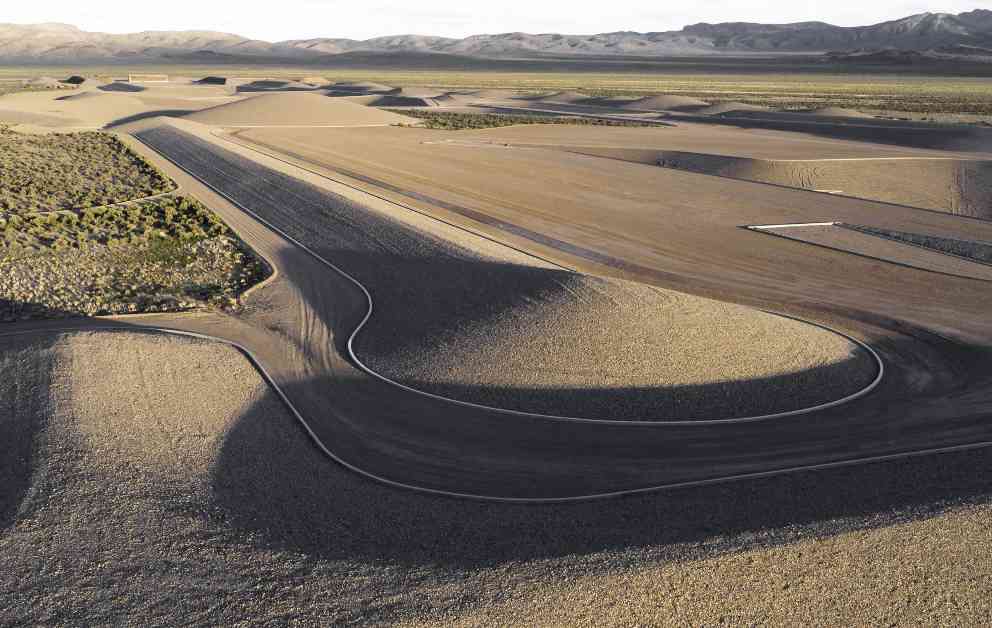Assessing the Legacy of Michael Heizer’s ‘City’ 50 Years Later
In the vast expanse of the Nevada desert lies a monumental sculpture that has sparked both admiration and controversy. Michael Heizer’s ‘City,’ a mile-and-a-half long concrete and rock creation, has been in the making for over 50 years. As visitors venture to this remote location, questions about the artistic significance and sociopolitical implications of the artwork have emerged.
The Origins of Land Art
Michael Heizer, a self-taught artist, played a significant role in defining the land art movement of the 1960s and ’70s. He was among the first American artists to use the earth as his canvas, challenging traditional notions of art confined to galleries. Land art emerged during a time of social and cultural upheaval, reflecting a desire to break free from conventional artistic boundaries and engage with the natural world.
The Land Art Movement and Indigenous Perspectives
However, as the world has evolved, so too has the interpretation of land art. What was once seen as a bold expression of artistic freedom is now viewed through a lens of historical and cultural sensitivity. Alicia Harris, a Native art history professor, emphasizes that Indigenous peoples have long held deep connections to the land, creating art that reflects their relationships with the environment.
The Impact of City on Indigenous Lands
As visitors navigate the stark landscape of City, the presence of ancient petroglyphs and the rich history of Native tribes in the region cannot be ignored. The proximity of Heizer’s creation to these cultural artifacts raises questions about the impact of the artwork on Indigenous lands and the narratives it represents. The conversation around City extends beyond aesthetics to encompass themes of colonization, conquest, and the ongoing struggle for Indigenous rights.
Challenges and Criticisms Surrounding City
Despite its awe-inspiring scale and intricate design, City has faced criticism for its perceived insensitivity to the land and its original inhabitants. The decision to construct a monumental sculpture in the heart of Nevada’s desert has prompted reflection on the broader implications of such artistic endeavors. For Native artists like Fawn Douglas, the permanence of Heizer’s creation raises ethical concerns about altering the landscape without due consideration for its historical and cultural significance.
Contemporary Native Perspectives on Land Art
In response to the legacy of land art, contemporary Native artists are redefining the relationship between art and the land. Works like Postcommodity’s Repellent Fence highlight the interconnectedness of Indigenous communities across borders, challenging traditional notions of art as a permanent fixture on the landscape. By embracing temporary and respectful approaches to land art, these artists are reclaiming their cultural heritage and challenging the dominant narratives of conquest and exploitation.
Navigating the Sociopolitical Landscape of City
As visitors explore City, they are confronted with a juxtaposition of natural beauty and human intervention. The meticulously constructed structures and sprawling concrete forms evoke a sense of awe and wonder, yet they also raise questions about the complexities of art in relation to history and identity. For observers like Scott Dickensheets and Brent Holmes, the experience of City is both profound and disorienting, inviting contemplation of the artist’s intentions and the broader implications of the artwork.
The Role of Heizer in Shaping the Artistic Landscape
Throughout his career, Michael Heizer has remained a controversial figure in the art world, known for his uncompromising vision and dedication to his craft. His decision to create City in a remote corner of Nevada reflects his desire to leave a lasting mark on the landscape, inviting viewers to engage with the intersection of art, nature, and history. Despite criticisms of his work, Heizer’s legacy as a pioneer of land art endures, sparking meaningful conversations about the role of art in shaping our understanding of the world.
Conclusion
As the sun sets on the desert horizon, visitors depart from City with a newfound appreciation for the power of art to provoke thought and inspire dialogue. The legacy of Michael Heizer’s ‘City’ continues to evolve, inviting us to reflect on the complexities of land art, Indigenous perspectives, and the enduring connection between art and the environment. In a world of ever-changing landscapes and shifting cultural narratives, City stands as a testament to the enduring legacy of artistic expression in harmony with the natural world.

